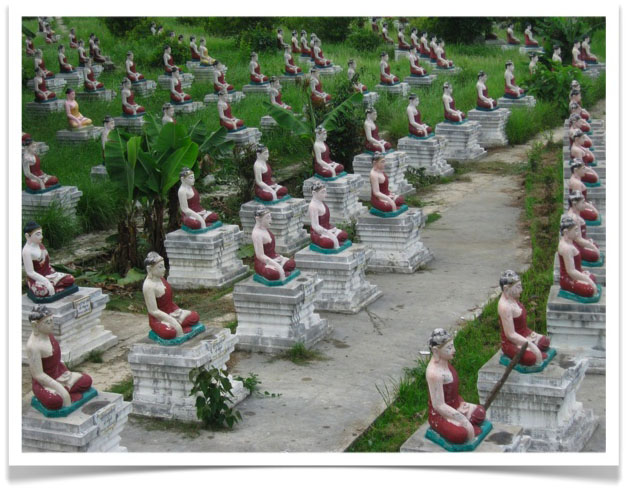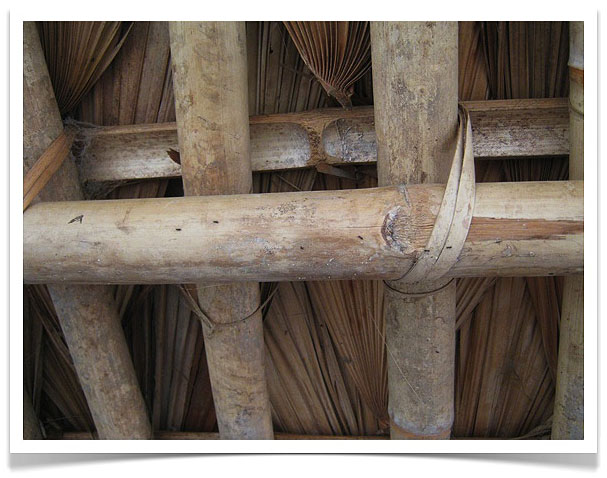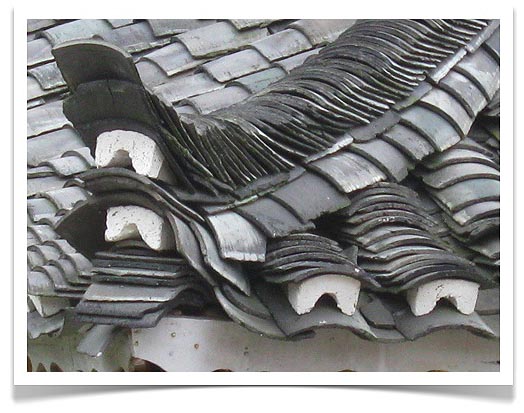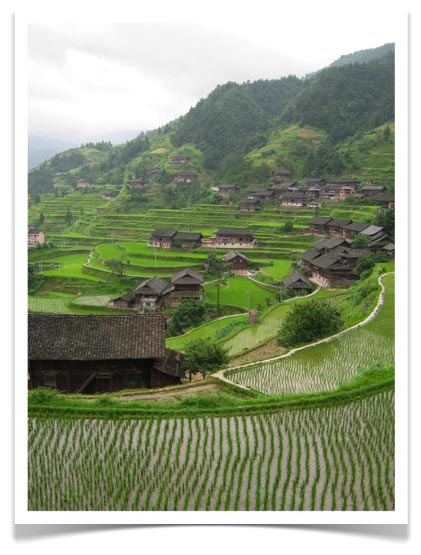
I spent the last five days in Shinlonga, a small Kachin village of 40 households inside the Hukaung Tiger Reserve in northern Myanmar. We ran 2.5 kilometers of inventory transects through local forests and did extended resource needs assessment interviews in the evenings with selected villagers. In spite of the leeches, the rattan spines, and the rain, it was a very productive and memorable stay. There is much potential and a great need for community forestry here, and I hope my visit has somehow helped to push things in this direction. Warm thanks to the WCS Yangon office, Saw Htun, Rob Tizard, and all the lovely folks in Shinlonga for making this happen. [NOTE: That's the Ledo Road shown in the foreground. The tall pole with the plaited bamboo, fly-swatter type thing on top is for slapping out fires on the palm-thatched roof].
 Thursday, June 18, 2009 at 1:29PM
Thursday, June 18, 2009 at 1:29PM 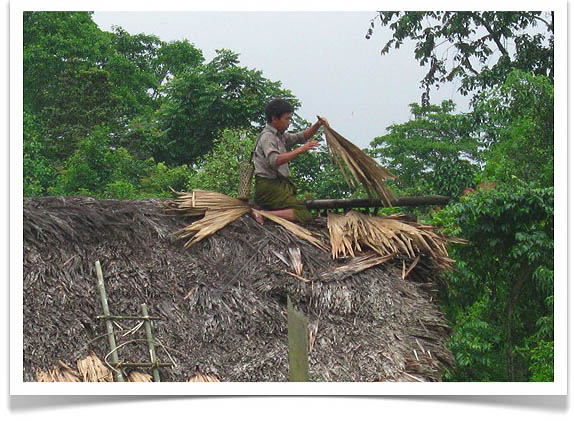
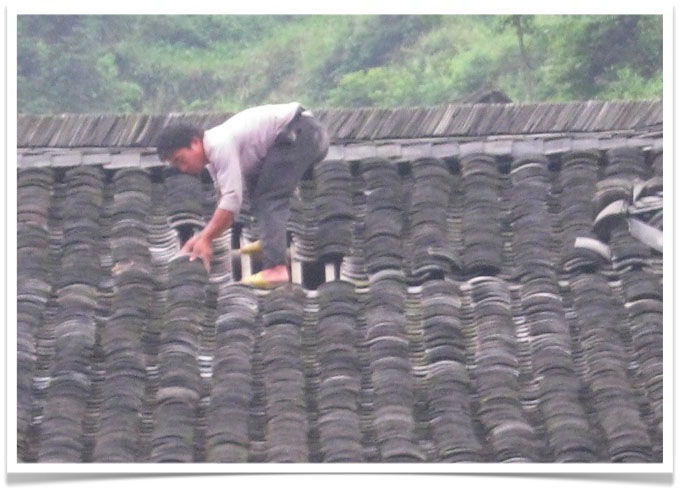 The Miao (see Roof Aesthetics) fix leaks by periodically replacing cracked or broken tiles, but the roofs of their houses can last for decades.
The Miao (see Roof Aesthetics) fix leaks by periodically replacing cracked or broken tiles, but the roofs of their houses can last for decades. 

